| |
|
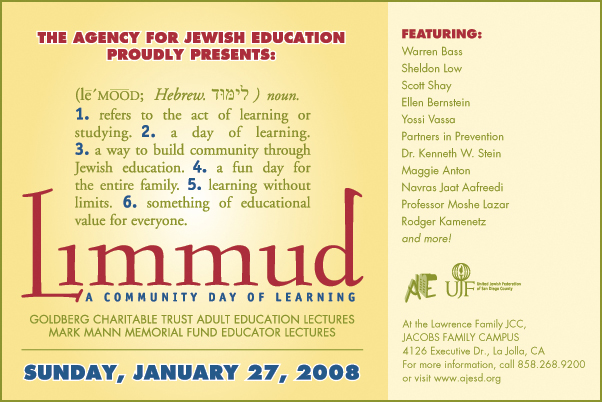



THE VIEW FROM JINSA
Why Gaza finds itself in the mess it is in
By Shoshana Bryen
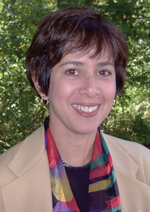 WASHINGTON, DC—Tens of thousands of Palestinians burst through the walls of Gaza into Egypt yesterday, amid wailing about the nastiness of life there. Agreeing that the Palestinians are uncomfortable - yes, uncomfortable, not starving or freezing to death, but uncomfortable - we have questions: why and how can it be fixed? WASHINGTON, DC—Tens of thousands of Palestinians burst through the walls of Gaza into Egypt yesterday, amid wailing about the nastiness of life there. Agreeing that the Palestinians are uncomfortable - yes, uncomfortable, not starving or freezing to death, but uncomfortable - we have questions: why and how can it be fixed?
It isn't the crowding, despite disinformation about Gaza being the most densely populated place on the planet. Singapore (6,639/km2) and Hong Kong (6,407/km2) are more densely populated than Gaza (4,118/km2) and Monaco (23,660/km2) is tops. New York City (25,846/km2) beats Gaza City (8,800/km2) hands down.
It isn't the lack of money. The State Department noted in June 2007 that the United States was putting an additional $40 million into UNRWA emergency relief for the territories, after the $50 million we contributed earlier in the year. Note that this was AFTER the Palestinian Civil War and the takeover of Gaza by Hamas. This follows $84.5 million in 2006. International donors recently pledged $7.7 BILLION over three years to the Palestinians, of which Fatah sources said 40 percent would be spent in Gaza. This follows $1.2 BILLION spent on the territories in 2006. [Check previous JINSA Reports about the level of ISRAELI aid to Gaza right up to this very day.]
It may have something to do with poverty. Money (see above) has very little to do with poverty, but UNRWA and intergenerational refugee status certainly do. The deliberate warehousing of Palestinians for nearly 60 years has left 795,000 people in Gaza classed as "refugees" - 70 percent of the total population!
This, then, clearly has something to do with refusing to accept the reality of Israel and an ongoing belief in the myth of a "right of return." [As a test, compare and contrast the successes in resettling Arab refugees of 1947-50 with Jewish refugees, both European and Middle Eastern in the mid-20th Century, and with all WWII refugees and with Vietnamese/Laotian/Cambodians of the 1970s and 1980s. Draw conclusions.]
But mostly, it has to do with the fact that the people of Gaza elected Hamas on a platform of armed attacks against Israel and Hamas has delivered as promised.
Remember that our State Department pronounced the 2006 Palestinian election "fair and democratic" expressions of "the will of the Palestinian people." Remember that in reality, Palestinian voters were given a "choice" between corrupt secular terrorists and corrupt religious terrorists. Both parties were - and remain - committed to policies that would de-establish the State of Israel whether by politics (Fatah) or by violence (Hamas).
The firing of Kassam rockets into Israel began under Fatah and continues with greater volume, range and accuracy under Hamas - aided immeasurably by the smuggling from Egypt. (If they can bring military equipment and money into Gaza from Egypt, why can't they bring milk for the children?) In 2006, more than 1,100 rockets and mortars were fired into Israel; in 2007 the number was more than 2,000. The total is more than 4,000 since Israel left Gaza. And just since 1 January, the number is more than 420, over 200 of which came in a span of four days last week.
The situation in Gaza today is the direct result of armed aggression emanating from Gaza against the Israeli people, itself a direct result of the failure of the Arab world and then the Palestinians to accept the permanence and legitimacy of the State of Israel in the region.


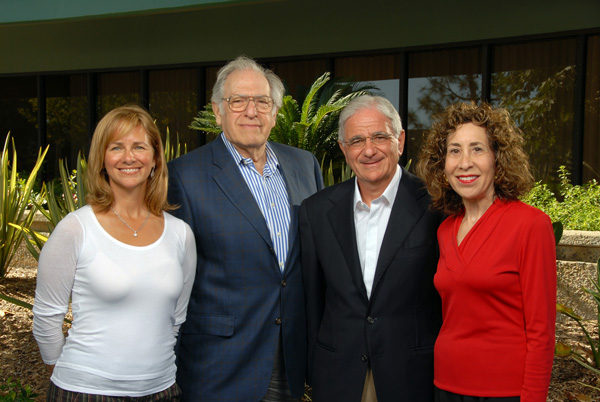
THE JEWISH CITIZEN
JFS North County Inland Senior Center is
a place for physical and mental exercise
By Donald H. Harrison
 POWAY, California—“If these walls could talk” at Jewish Family Service, they might talk about the women and men whose ideas and commitment were their raisons d’être. The walls at North County Senior Center, now located within Temple Adat Shalom here, might praise Merle Fischlowitz, whose determination and largesse helped the growing senior program. POWAY, California—“If these walls could talk” at Jewish Family Service, they might talk about the women and men whose ideas and commitment were their raisons d’être. The walls at North County Senior Center, now located within Temple Adat Shalom here, might praise Merle Fischlowitz, whose determination and largesse helped the growing senior program.
The walls at the Turk Family Center on Balboa Avenue in neighboring San Diego might converse about namesakes Jerry and Carole Turk, who responded to the need of JFS personnel and clients to have a much larger San Diego County headquarters. And at the food pantry inside the Turk Center, the conversation would be all about Marsha Berkson, who is the volunteer behind the “Hands Up” program, providing food to the hungry of all faiths and creeds.
Berkson, Fischlowitz and the Turks will be honorees at the JFS Gala at 6:30 p.m., Saturday evening at the Hyatt Aventine in La Jolla. The Jewish Family Service programs that resulted from their financial generosity and farsightedness are the subject of our two part-series, starting with a look at the North County Inland Senior Center, which I visited earlier this week.
The senior center offers programming from 10 a.m. to 2 p.m. on Mondays and Wednesdays, with a kosher lunch being a centerpiece of both days. Should you decide to eat there, be prepared for some lively and stimulating conversation, often fueled by the lectures arranged by the center’s director Melinda Wynar.
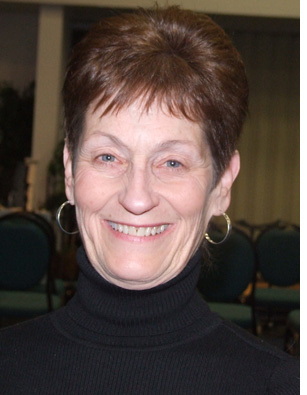 Wynar, a veteran of Jewish programming from her days at Temple Ahavat Shalom in Northridge, California, and at the Garden Court complex at Seacrest Village in Encinitas, likes to vary the activities menu, so that seniors can enjoy entertainment, exercise and discussions as diverse as the interests and resources throughout metropolitan San Diego County. Wynar, a veteran of Jewish programming from her days at Temple Ahavat Shalom in Northridge, California, and at the Garden Court complex at Seacrest Village in Encinitas, likes to vary the activities menu, so that seniors can enjoy entertainment, exercise and discussions as diverse as the interests and resources throughout metropolitan San Diego County.
Coming up, she noted, “we are having a program on global warming. We are lucky to have the San Diego Historical Society coming, and the San Diego Museum of Art with a docent to do a slide lecture. My purpose here is to bring things to the seniors that they may not be able to get out to. We have the San Diego Opera Ensemble coming in February.”
Additionally, she said, “we like to keep them current on the subjects of the day" as well as on more universal themes. "This morning we had a speaker (Rabbi Aliza Berk of the Jewish Healing Center) talking about humility.”
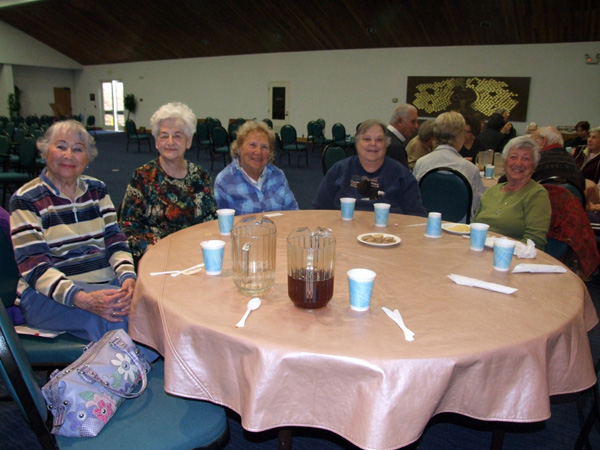
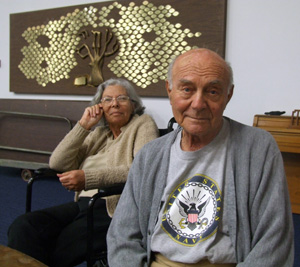 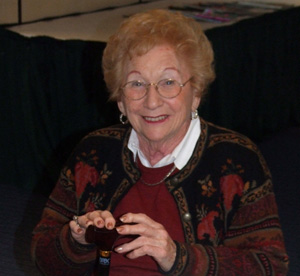
Among the regulars at the senior center are Chester Feinberg, 83, and his wife Carol, 80. They have been attending events for six years both at the program’s current home at Adat Shalom at 15905 Pomerado Road on the Rancho Bernardo/ Poway border and at its previous home at Chabad at Poway.
“We like to hear people speak,” said Chester Feinberg. “We enjoy all the lectures, I can’t really say one versus the other. Everyone is about a different subject. They provide intellectual stimulation.”
The luncheons also are good, not only for the food, but for the company, he said.
I found that out to be a true when I was seated for lunch at a nearby table with six ladies, who got into an animated discussion about the approaching, February 5, presidential primary in California. At least four of them said they planned to vote for Hilary Clinton, but another declared that there was absolutely no way that she would vote for the former First Lady, ever.
The one hold out might have had some support from the sixth woman at the table, but her potential ally had to leave early to attend a bridge game. Nevertheless, she good naturedly stuck to her party preference. The lively discussion was one in which differences were aired, but without rancor.
Among the six women at the table was Lucee Sirk , an 84-year-old widow and former JFS board member who since her husband’s death has restricted her volunteer activities to serving on the North County Inland Center’s Advisory Committee. She noted that many of the seniors who attend the center “do not drive and so we have a van… I think all of them come pretty regularly because it gives them a chance to socialize, a chance to participate. Since we have moved to Adat Shalom (in 2007) our membership has really grown.”
While the facility at Chabad at Poway was bright and airy, Sirk said, for some people an Orthodox establishment was off-putting. Because Adat Shalom was in the process of constructing a new sanctuary, Sirk said she initially opposed the move, but now with the former sanctuary transformed into a large social hall available to the senior program, she has decided the move was for the best.
Since the center was relocated, membership has doubled to approximately 325 persons, with about 80 of these attending events in any given month, according to Wynar. Membership of $25 per year for individuals and $35 per year for couples allows seniors to attend the exercise classes in the morning, the lecture or movie at 11 a.m., and another lecture or program at 1 p.m. The lunch costs $5 for members and $7 for non-members. Round trip transportation between home and the center costs seniors an addition $3.
Wynar said there is now an opportunity for further growth because the large social hall at Adat Shalom is flexible enough and available often enough to permit consideration of new activities. She said she is now in the process of developing cost projections to help JFS weigh such possibilities as classes in bridge, memoir-writing, ballroom dancing, and Latin dancing. If everything is confined to the current Monday and Wednesday schedule, such programs have one set of cost implications, but if they are offered on other days of the week, there are different impacts on cost: more rent paid to Adat Shalom, a van driver to be hired, staff to prepare the meals.
Fischlowitz has been one of the North County Inland Community Center’s most important financial backers, and remains so even though he personally has moved from Rancho Bernardo to downtown, closer to such other of his philanthropic interests as the San Diego Lyric Opera and the San Diego Opera.
According to Jill Spitzer, the chief executive officer of JFS, Fischlowitz “is the guy who in the last ten years really stepped up, doing amazing things both in the Jewish and general communities. After we started a senior center in University City, he wanted something to be done in the Rancho Bernardo/ Poway area. He had already been working for a number of years supporting programs for seniors in that community, but he thought there should be something on a more intensive basis to bring isolated Jewish seniors to a place where they could socialize, have lunch and come together as a community. He almost single handedly organized, pushed, nudged, and in an articulate and focused way, got us all thinking about that community. His leadership helped bring the community together to figure out what we would do. He has been the financial, moral and cheerleading support for this program.”
Next: The Turk Family Center and its Hand-Up Pantry
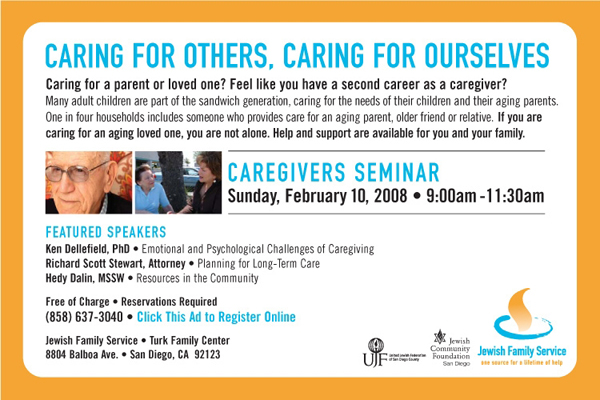


Sabbath Amphitheatre: Celebrating
Creation in Sequoia National Park
By Sheila Orysiek
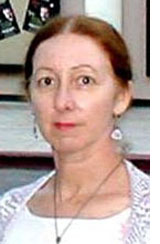 SAN DIEGO—When I first began attending Sabbath Services on Friday evenings I found myself asking “Why does G-D want me to rest – to stop working – or even cease from doing some of the things I enjoy but which are classified as “work?” Other than attending services, why should I take time out to make the Sabbath different from other days? The only answer which occurred to me was that being part of G-D’s creation, I needed to take one day out of the week to celebrate that creation. I find it a most satisfying answer. SAN DIEGO—When I first began attending Sabbath Services on Friday evenings I found myself asking “Why does G-D want me to rest – to stop working – or even cease from doing some of the things I enjoy but which are classified as “work?” Other than attending services, why should I take time out to make the Sabbath different from other days? The only answer which occurred to me was that being part of G-D’s creation, I needed to take one day out of the week to celebrate that creation. I find it a most satisfying answer.
For many years I made an annual trek to Sequoia National Park and if one can’t find the answer as to why we should celebrate creation in that spectacular setting – one would be hard pressed to find it anywhere else. To each time of the day the forest brings a special delight, but for me it was the evening’s performance in the natural amphitheatre of trees around the meadow that crowned the Day of Rest.
I have always been an early riser. Dawn would especially beckon to me when I stayed in a small cabin in the forest. As the sun’s first light filtered through the Giant Forest section of Sequoia National Park, I would hasten from a warm bed and step out onto the cabin’s porch. The chill sting of the morning air greeted me as I gratefully wrapped my fingers around a cup of warm tea.
The wild creatures were already well astir; with a flash of blue, jays sailed between the pine trees, beginning their daily gossip. A herd of deer flowed through the glade, intent on a morning errand and the tiny creatures of the woodland floor chirped and scampered, searching for a breakfast snack. I looked up and the sky was no longer dark but not yet blue - a day in the forest had begun. But as much as I welcomed the morning, it was the coming of evening that took my breath away.
The Hazelwood Nature Trail was my favorite woodland path and I sat down on the soft pine strewn earth on the edge of the meadow to view the coming performance. Gone was the dust spangled haze of noon, the giant red Sequoia trees were ranged around the close meadow, standing tall, present and awaiting their cue. About their waists smaller trees grew basking in their own green light; different shapes, different leaves. However, it was the Giant Sequoias that stole the show. I was about to see an event repeated nightly through the ages. Two hundred years before other people had stood or sat waiting in this place as I did now. And a thousand years earlier their ancestors must have stood here, watching the very same trees, overwhelmed by the coming drama. The sun was about to set.
And if no one was to watch would it still happen? For the pure joy of it I know it would. Always G-D would see and cause it to occur. It is not enough for the forest to just be - or procreate - it is anointed with a constantly changing beauty; the eternal theater of Creation. For our individual particular delight the ordinary sunset becomes a wonder. All is quiet now, the spectacle is about to unfold, the silent drama begins, the internal music sings, - the curtain rises.
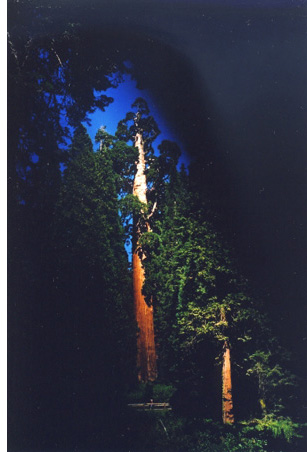 As the sun slid down the western sky and dropped to the crag jagged horizon, a finger of light slashed through the forest. It pointed to a single ancient Sequoia and bathed its red body in cloth of gold. In rapture I watched as the tree stood alone, plucked from amongst its fellows; a single performer on a crowded stage. The red tapestry of the tree’s trunk was a glory to see; alight with flame, a fiery torch saluting the setting sun. It seemed as if every creature had stopped to marvel. Slowly the light swept across the surface, each facet of the tree etched in brilliance. But its moment of stardom was transitory and reluctantly it relinquished its fame. As the sun slid down the western sky and dropped to the crag jagged horizon, a finger of light slashed through the forest. It pointed to a single ancient Sequoia and bathed its red body in cloth of gold. In rapture I watched as the tree stood alone, plucked from amongst its fellows; a single performer on a crowded stage. The red tapestry of the tree’s trunk was a glory to see; alight with flame, a fiery torch saluting the setting sun. It seemed as if every creature had stopped to marvel. Slowly the light swept across the surface, each facet of the tree etched in brilliance. But its moment of stardom was transitory and reluctantly it relinquished its fame.
The next tree took up the psalm of praise, glowing in an ecstasy of color and so the light moved on to another and another and another: each a silent singer in a chorus of Hallelujah. And, thus the circle of light made the round from tree to tree; a beacon fresh from the sun in an amphitheater of beauty. Each tree, each creature, was given its one moment before the coming of night, involuntary participants in the parade of time.
Time caught me, too. As I stood mesmerized by the sight, night rose about me. I had stayed too long. I was not a creature of the dark. The golden light was now a gloom. The last of the jays settled noisily for the night and the small creatures of the day went to sleep as others took their places. The mole peeked out from under his log. The once friendly trees now loomed about me, blocking my path - or so it seemed.
I hastened my steps as the darkness gathered about my feet. Only the very treetops were still alight, reassuring me that all was not yet lost. More and more quickly I ran down the forest path, across the road and finally toward the beckoning light in the cabin window. With a last look over my shoulder at the now threatening forest at my back, I ran up the porch, into the cabin and closed the door behind me. The miracle of the Sabbath Havdalah was over.

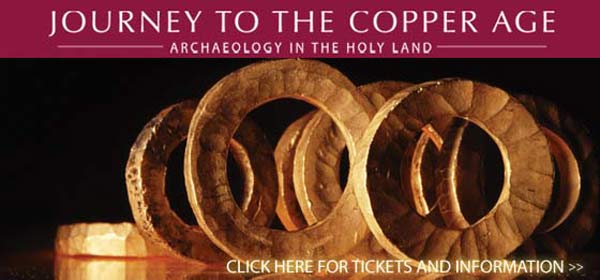

SAN DIEGO JEWISH WORLD THE WEEK IN REVIEW
Shoshana Bryen in Washington, DC: U.S. arms for Saudi Arabia not in the best interests of the United States, nor Israel
Carol Davis in San Diego: 'Tranquility' never really comes together
Donald H. Harrison in San Diego: A special artists' view of the Holocaust
Ira Sharkansky in Jerusalem: Yaalon plan ignores Palestinian realitiesShoshana Bryen in Washington, DC: Bush's Middle East trip a disappointment
Peter Garas in Canberra, Australia: Iran vs. Israel, U.S. vs. Russia, making Eurasia increasingly tense, unstable
Donald H. Harrison in San Diego: Documentary examines bar mitzvah of Lior Liebling, enthusiastic student with Down'sJudy Lash Balint in Jerusalem: The many cultures of winter in Israel
Cynthia Citron in Los Angeles: Women’s roles in modern Judaism, Islam and Catholicism topic of Brandeis confab
Peter Garas in Canberra, Australia: South Africa cuts neighbors' power but somehow there is no international outcry
Donald H. Harrison in San Diego: Some spiritual L-DOPA for an aged kibbutz
Ira Sharkansky in Jerusalem: Suffering for its public relations value
Congressman Bob Filner in Washington, D.C.: Former Freedom Rider remembers MLKGail Feinstein Forman Sandi Masori in La Jolla, California: What do you know? I am a Jew after all.Sheila Orysiek in San Diego: Tu B'Shevat: Celebrating the perfection of a tree
Gerry Greber in La Jolla, California: A harrowing tale of death, survival at sea
Rabbi Baruch Lederman in San Diego: The mousetrap and the farm animals
Rabbi Leonard Rosenthal in San Diego: The modern meaning for Tu B'Shevat
Ira Sharkansky in Jerusalem: Fatah to end ceasefire. Are they kidding?
< BACK TO TOP
|
|

